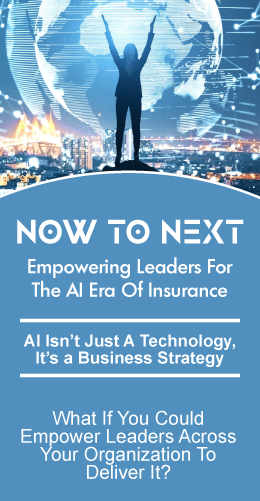The agency model has unique, structural advantages over direct writers and lead-gen platforms in insurance distribution in that it is best aligned with consumer desire for objective, transparent, and trusted advice for their risk management needs. A customer-centric agency that can deliver efficient customer acquisition, a frictionless shopping experience, and trusted, ongoing advisory services can create immense value for today’s insurance consumer, and is the only way to re-establish the independent agency as the risk management model of the future.
The Legacy Agency
Demand for an independent agency model, whether in insurance or in other industries like travel, has largely been driven in the past by a consumer need for price discovery. In previous decades characterized by opaque underwriting models and outdated technology, independent insurance agencies and agents were able to serve as a valuable intermediary between insureds and carriers by helping underwrite and compare prices for consumers that otherwise could not do so on their own.
As carriers have become more comfortable exposing their prices to customers directly, and the transparency of online price comparison tools has accelerated consumer access to their products, this key value driver for independent agents has become increasingly irrelevant to the consumers they serve. To maintain their role in the industry, customer-centric agencies must find new ways to create value for their customers. Here are three ways in which agencies are leveraging data and digitization to improve links in the insurance customer value chain.
Three Keys to Customer-Centric Distribution
Customer acquisition in insurance is characterized by massive inefficiencies today. Inefficiency is not the same as ineffectiveness, but with close to 3% of all marketing dollars in the U.S. now being spent by P&C insurers alone, an agency that can cost-effectively connect consumers with the insurance products they need to buy every year (without peppering their websites with ‘we will sell your information to third-parties’ disclosures) can achieve scale quickly.
For customer-centric agencies, this starts with identifying intent. In the past, this might have been facilitated by gathering policy renewal dates at Chamber of Commerce luncheons, but today, customer-centric agencies have access to a much wider range of insights into customer intent. From targeting new home buyers who need a home insurance binder for their closing, to delivering mobile ads for pet insurance driven by geofencing at veterinary clinics, agencies have more opportunities than ever to identify subsets of their clients that may have an insurance need they can help with today.
The second link of the customer experience where a customer-centric agency can deliver value is in the quoting experience. Bain & Company put it succinctly when they reported that ‘insurance customers don’t have complicated needs. They want to be able to choose from a good selection of policies at reasonable prices. They want clear, transparent information, and they want smooth, hassle-free interactions.’
Not a lot to ask for!
Today’s consumer expects a frictionless shopping experience, and agencies today can deliver on this by integrating the right data sources into their platforms. Accessing vehicle information from the RMV, property information from local assessors’ offices, and corporate filings through secretary of states offices, agencies can efficiently access the underwriting data they need to shift the time they spend with their customers from information-gathering to consulting.
The final element of the customer experience where agencies can add unique, customer-centric value today is in post-sale account management and servicing. For consumers looking for a single advisor to work with for all of their risk management needs across property, casualty, life, accident, health, and beyond, no single carrier has proven they can meet all of those needs effectively. On the other hand, the right agency partner can not only secure coverage for their clients across these lines, but post-sale can consolidate all of their policy documents, ID cards, and relevant claims information into a single, digitally optimized customer account. This type of solution also promotes ongoing client engagement as it gives their customers a place to come back to again and again for all of their risk management needs.
Creating a Customer-Centric Digital Agency
Agencies, Carriers, and Solution providers need to work together to digitally transform the agency model to be relevant in the digital industry that is quickly forming around us. That means a minimum of digital enhancing the customer/agency experience. It means moving to cloud-based systems that leverage API & Microservices Platforms that can be bound together to create a seamless experience for the customer. It means integrating data from 3rd parties to reduce the number of questions that need to be asked and re-asked of the customer. And, it means carriers need to make sure data about their appetite and underwriting policies are available digitally. Beyond that, participants in the value chain need to use user experience design to create customer-centric experiences and workflows across the different systems. Unless this work is done, the industry will lose one of the most valuable mechanisms it has to create and deliver customer value.








